Rain and plenty of sun: the garden of Painting Plants is looking good this summer. More than 30 species of plants are now growing in the garden between Broedplaats Bouw and hostel Wow.
Biologist and artist Naan Rijks started the Painting Plants research project in 2011 with the question how paint – or ink – can be made from plants to be used for various printing techniques.
This spring, Aster Kruisbrink and Ruben de Haas took over from Naan and Lucila Kenny, who joined the project, that had been adopted by AGA LAB in 2017. We asked Aster and Ruben what they encountered, what they did in the first few months and what the plans are for Painting Plants.
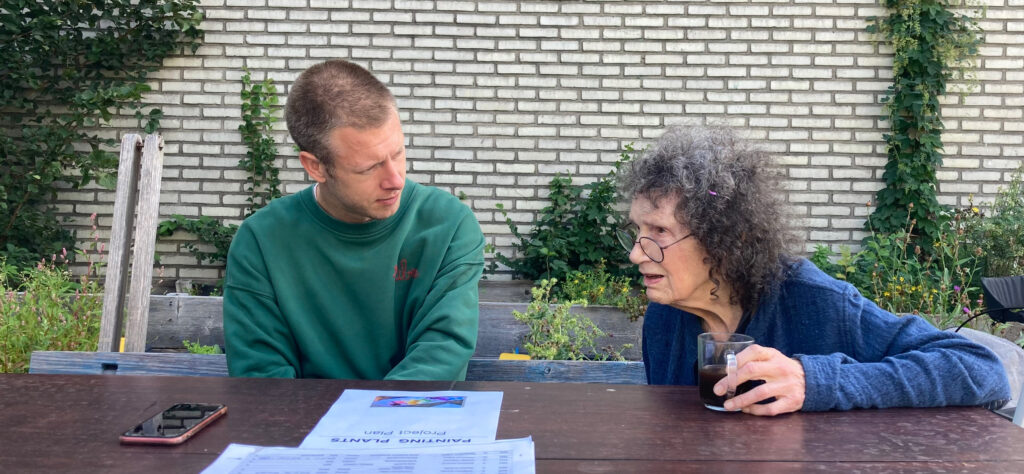
What was the first thing you wanted to do?
Restoring the garden was the first thing we wanted to do. This meant learning what used to grow in this garden and giving those plants a second chance by making room for them. We had to remove a lot of weeds, especially the invasive plants. (And what are weeds according to Naan?) We wanted to add other plants that seemed interesting to us. We also immediately planned to renovate the planters. We have made a plan for that.
What were some of the unexpected issues that you encountered?
When we first started in the garden we were surprised for a moment. One plant after another seemed to be disappearing. We didn’t see anyone else working in the garden, so that was quite strange. Eventually we found out that a group of ladies from Wow (the hostel) had started to remove everything. They thought the garden was so unkempt that they made a plan to plant onions, carrots, tomatoes and lots of parsley. We have now divided the garden and everyone can do their own thing and it is extra nice that there are more people working in the garden!
And something you would rather not spend time on: the indoor space used for Painting Plants had a major leak and it has rained a lot lately. It has now been fixed!
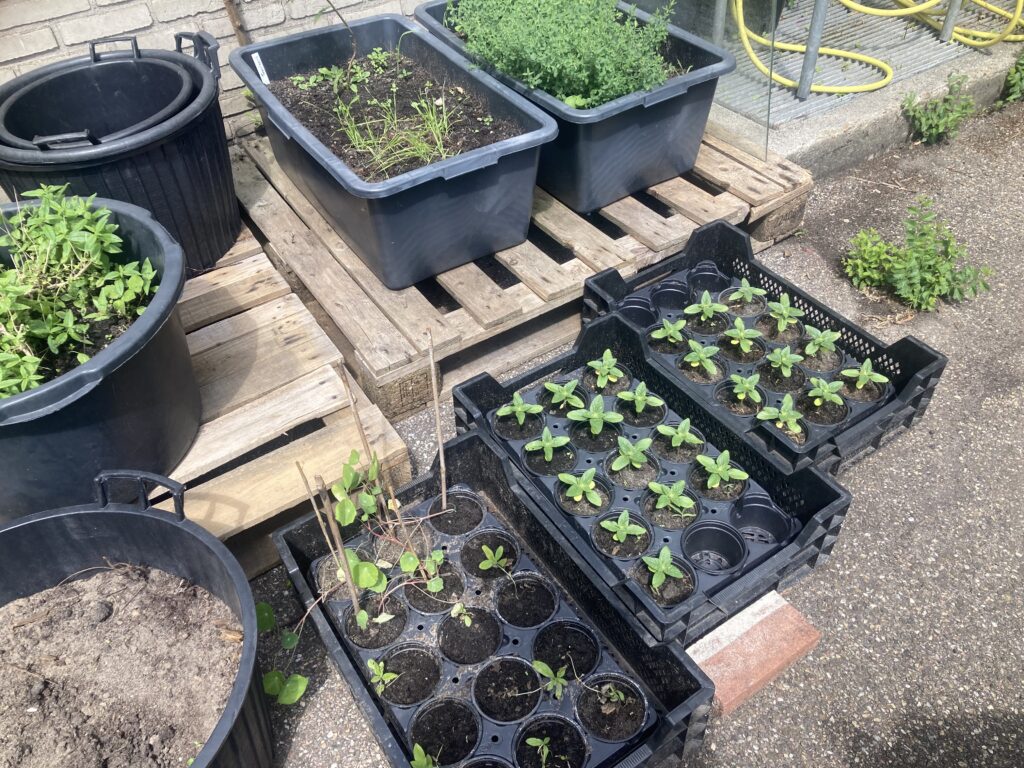
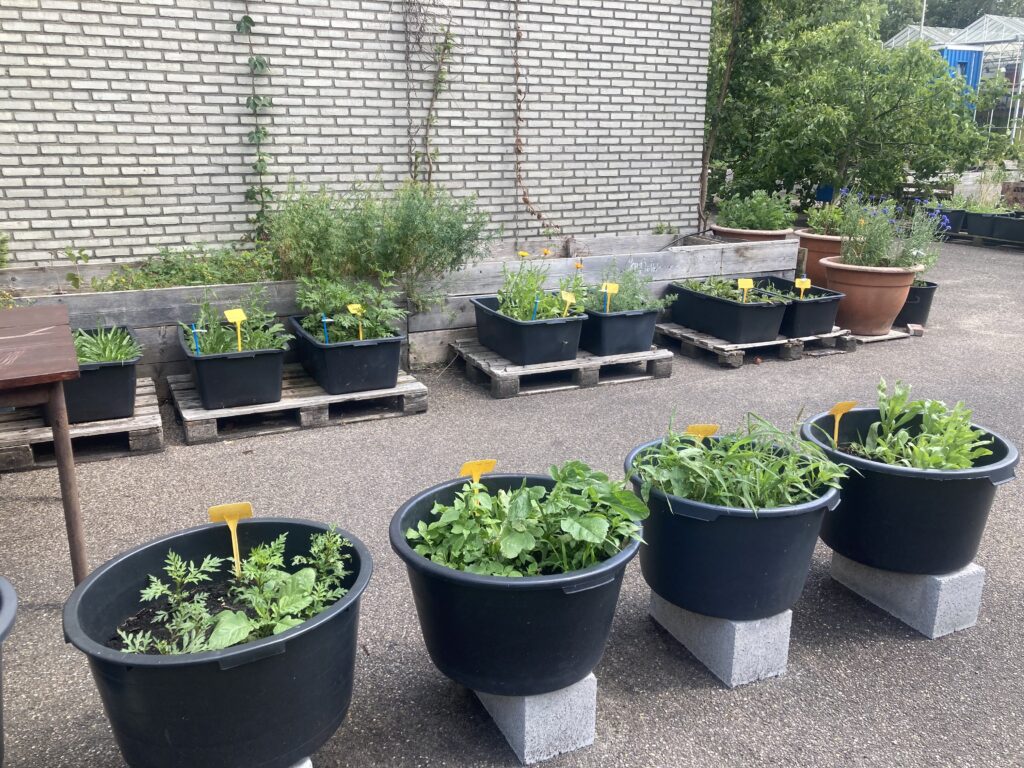
What were the summer months like?
Relaxing. It was quite a bit of work to maintain, but it is so nice to work in the garden that it is completely worth the time. After a day like that, eating fresh figs from the tree is no punishment. Naan has come by to see the garden a few times and a smiling naan is a reward in itself.
What are your plans for the coming months?
Preparing the garden for winter; picking seeds from the dead plants. Making inks! We are going to remove the dyes from the plants and do further research and see what we want to have in the garden next summer. We want to apply for a subsidy for the plans we have, and we also want to renovate the interior space.
What are you dreaming of when you think about Painting Plants?
We dream of Artist in Residencies, of workshops, of updating the website for an even clearer database and of a living library. We also look forward to educational collaborations with schools and workshops, students who can come along to work on their own projects. We want to strengthen the combination of art and science. It would be nice to create a vegetable color range for (industrial) printing techniques.
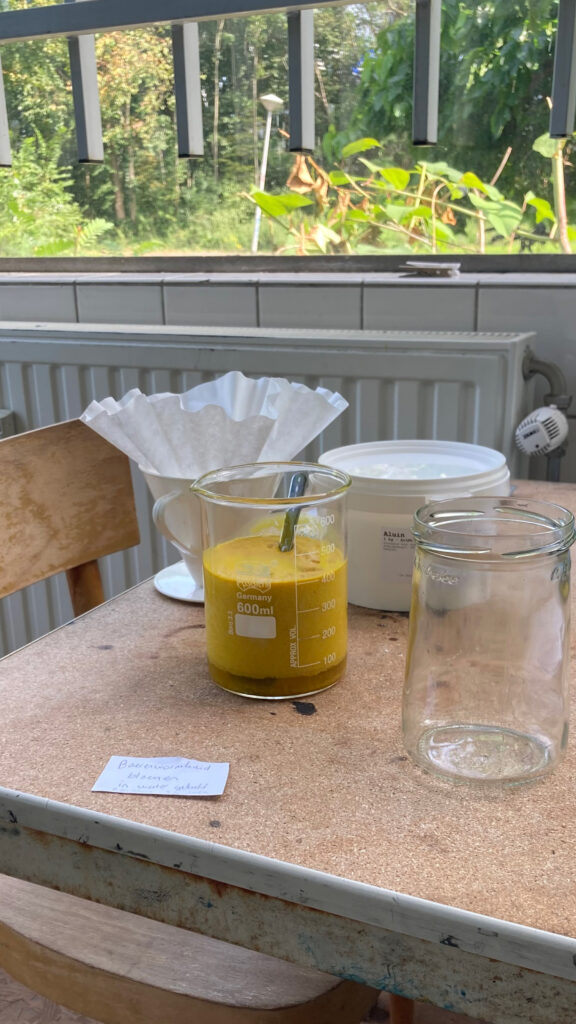
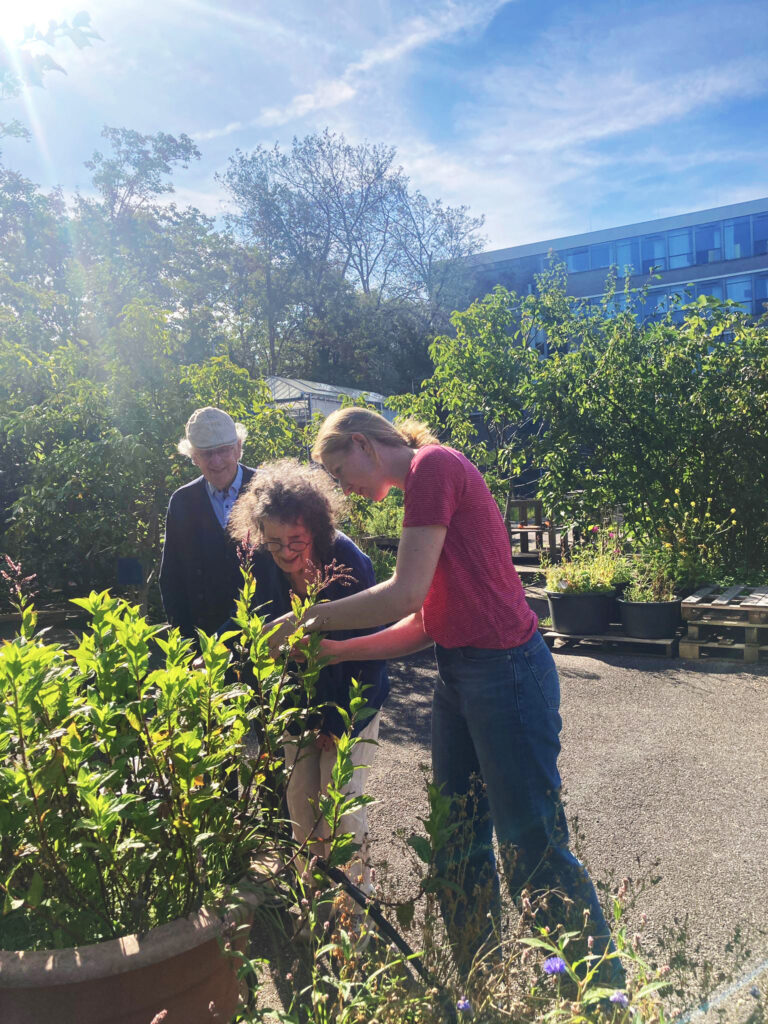
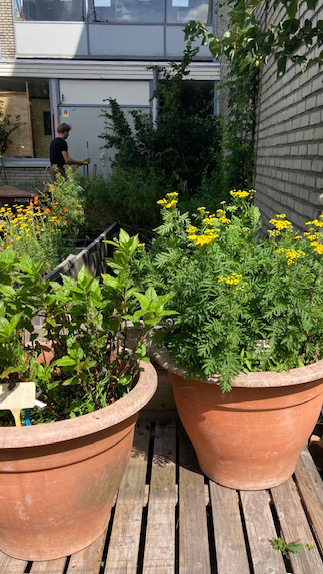
When can the first inks be made?
We are already working on that! We have already processed several plants into ink or pigment in recent weeks. For example, we have tansy, where the yellow color can be removed from the flower. With tansy, the first step is to boil it in water, after which it is passed through a filter with soda and alum. After drying, the yellow pigment remains.
With Japanese Indigo it works differently: it has to ferment in a pot of water, causing the blue dye to come out of the plant, which can then be further processed. When harvesting Japanese Indigo we use the leaves. This must be harvested before the plant starts to flower (the plant gets pink or white flowers). When flowering, the indigo, the blue color, becomes less strong.


